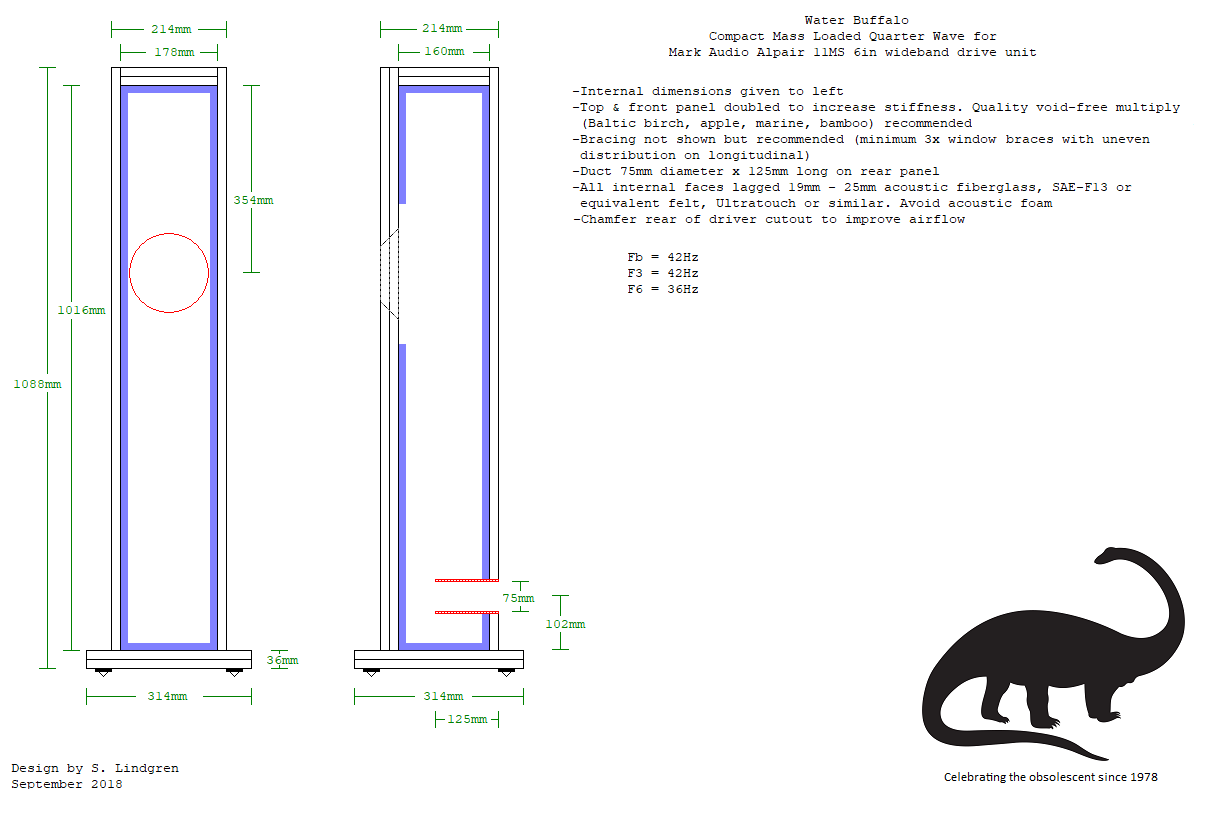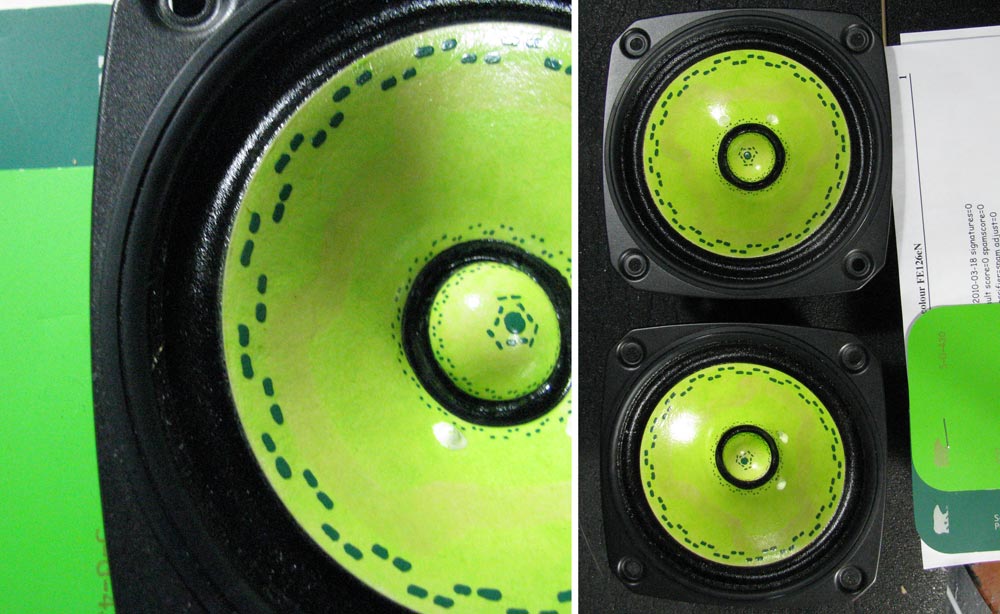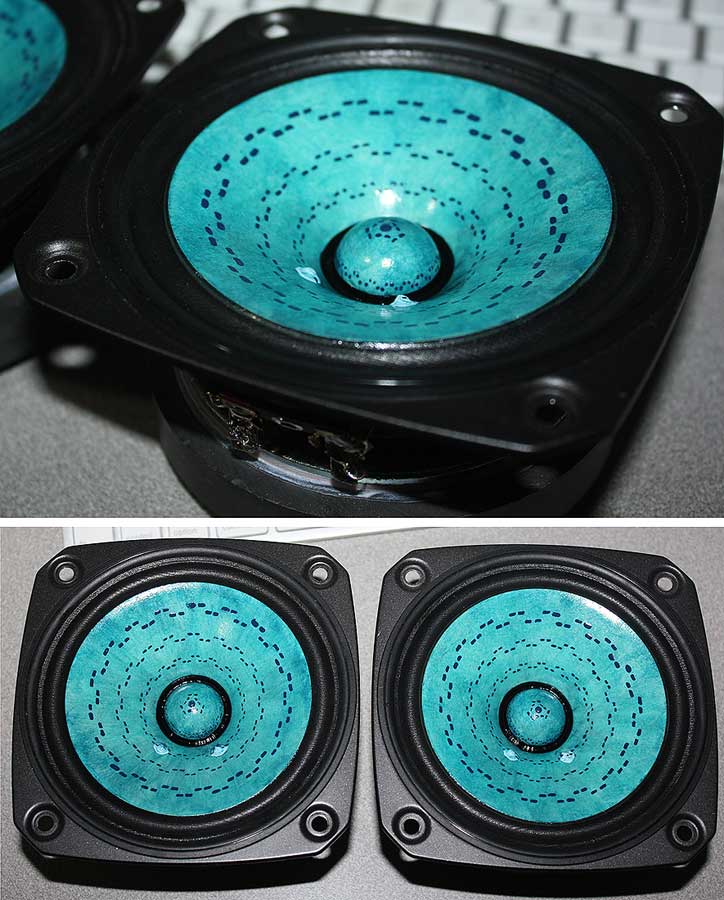Dear all,
I'm moving into a new house in the countryside with more available space and I would build and install two fullrange speakers in the livingroom for music and tv as well.
I would dedicate to them a PP with EL84 that gives around 20 Wrms per channel, or a KT88 SE with around 30 Wrms per channel.
The kitchen&livingroom is an L (imagine a square 7x8 meters with a missing quarter).
I'd need to install the speakers close to the wall and it is ok to have an height of 1.8-2 meters if performances can benefit (footprint would be more critical due to WAF).
Cabinets will be built together with a friend, and I would prefer not exceed 4-500 euros for speakers.
Can you suggest me something and guide me to some readings to better understand how to set/arrange the speakers in the room and fine tune the system?
Thank you in advance,
Roberto
I'm moving into a new house in the countryside with more available space and I would build and install two fullrange speakers in the livingroom for music and tv as well.
I would dedicate to them a PP with EL84 that gives around 20 Wrms per channel, or a KT88 SE with around 30 Wrms per channel.
The kitchen&livingroom is an L (imagine a square 7x8 meters with a missing quarter).
I'd need to install the speakers close to the wall and it is ok to have an height of 1.8-2 meters if performances can benefit (footprint would be more critical due to WAF).
Cabinets will be built together with a friend, and I would prefer not exceed 4-500 euros for speakers.
Can you suggest me something and guide me to some readings to better understand how to set/arrange the speakers in the room and fine tune the system?
Thank you in advance,
Roberto
SEAS FA22 is good. Needs phase pkugs.
Many of the Mark Audio are good. Being in Italy the Faital Pro (the 3 and 4”) might be of interest.
The power is not an issue, the (expected) higher Rout of the SE amp (how do you get 30w out of a KT88?
We really need more information to help.
dave
Many of the Mark Audio are good. Being in Italy the Faital Pro (the 3 and 4”) might be of interest.
The power is not an issue, the (expected) higher Rout of the SE amp (how do you get 30w out of a KT88?
We really need more information to help.
dave
Thanks Davor D and planet10!
I will take a look at the SEAS FA22RCZ, seems very good!
The EL84 PP is already built and has a Rout of 2 Ohm circa, whilst the KT88 SE is not built yet but on paper it works and it is based on reliable new projects. It has a Rout of 0.93 Ohm (on LTspice, you can find details here: Single Ended: the pentode retaliation )
I will take a look at the SEAS FA22RCZ, seems very good!
The EL84 PP is already built and has a Rout of 2 Ohm circa, whilst the KT88 SE is not built yet but on paper it works and it is based on reliable new projects. It has a Rout of 0.93 Ohm (on LTspice, you can find details here: Single Ended: the pentode retaliation )
Yes, the EL84 amp is indeed the best amp I've heard so far, and I like them for instrument amplification too.
Both amps have no gnfb, just local feedback on the driver and on the output tubes.
That's why the EL84 PP has a high Rout. The KT88 SE is the concept of the local feedback taken to the extremes (KT88 plate swings only 2.5 times what g1 swings), that's why it has such a low Rout.
What cabinet do you suggest? I like Metronomes and generally speaking tall cabinets (my current speakers are a pair of Klipsch RF82), and I'm open to all sugestions.
Thanks
Both amps have no gnfb, just local feedback on the driver and on the output tubes.
That's why the EL84 PP has a high Rout. The KT88 SE is the concept of the local feedback taken to the extremes (KT88 plate swings only 2.5 times what g1 swings), that's why it has such a low Rout.
What cabinet do you suggest? I like Metronomes and generally speaking tall cabinets (my current speakers are a pair of Klipsch RF82), and I'm open to all sugestions.
Thanks
For FA22 i would do a sealed box (about 50-70 litres IIRC). I know Sxott has done a few more exotic boxes for them, i haven’t drawn them. They will be in his [URL="https://www.diyaudio.com/forums/full-range/323051-miscellaneous-designs-mark-audio-fostex-tb-dayton-seas-etc.html”]Miscellaneous Designs thread[/URL]. He designs them faster than i clean up the drawings and it is sort of storage/list of what still needs doing :^).
The Mark Audio, which i personally like even more, have a wide range of vetted box designs from small reflex to large TLs and horns. There are some of them in the above thread but others are scattered all over.
dave
The Mark Audio, which i personally like even more, have a wide range of vetted box designs from small reflex to large TLs and horns. There are some of them in the above thread but others are scattered all over.
dave
Thanks planet10,
What would be your suggestion out of the Mark Audio range of products?
I've read people happy with the 11MS and the "Water Buffalo" (ref. here: Miscellaneous designs -Mark Audio, Fostex, TB, Dayton, Seas etc. )

I've read your preference was the A10.3, is it still like that?
Roberto
What would be your suggestion out of the Mark Audio range of products?
I've read people happy with the 11MS and the "Water Buffalo" (ref. here: Miscellaneous designs -Mark Audio, Fostex, TB, Dayton, Seas etc. )
I've read your preference was the A10.3, is it still like that?
Roberto
We built the taller Seastack, it is superb.
http://wodendesign.com/downloads/SeaStack-A11ms-MLTL-010918.pdf
Waterbuffalo is quite short, it will probably need a tilt-back.
It was A10.3eN, not A10.3 that out imaged the A11ms, but i attribute that to the eN part not the A10.3 part.
dave
http://wodendesign.com/downloads/SeaStack-A11ms-MLTL-010918.pdf
Waterbuffalo is quite short, it will probably need a tilt-back.
It was A10.3eN, not A10.3 that out imaged the A11ms, but i attribute that to the eN part not the A10.3 part.
dave
The suffix "eN" is your work on the speakers if I've understood correctly.
How can I contact you to have an idea of the benefits and the extra price?
I like the Seastack, indeed I would prefer tall cabinets.
How distant must it be from the rear wall, with that rear vent?
Thanks again!
How can I contact you to have an idea of the benefits and the extra price?
I like the Seastack, indeed I would prefer tall cabinets.
How distant must it be from the rear wall, with that rear vent?
Thanks again!
eN is the postfix to note that the driver has been EnABLed. You willsometimes see eN2 to distinguish drivers that also came with EnABL v1.
I am no longer providing EnABLed drivers (but i do have some odds & sods need clearing out).
I will help anyone as much as i can if they want to take it on themselves. And their are some easy mods on some of the drivers that are easily doable (as long as you can bring yourself to permanently modifying the driver).
Note that there ar enone of these tricks for the metal cone Alpairs, they just get spots and conformal coating.
dave
I am no longer providing EnABLed drivers (but i do have some odds & sods need clearing out).
I will help anyone as much as i can if they want to take it on themselves. And their are some easy mods on some of the drivers that are easily doable (as long as you can bring yourself to permanently modifying the driver).
Note that there ar enone of these tricks for the metal cone Alpairs, they just get spots and conformal coating.
dave
So I would say it is better to buy those 11ms first, then ask you how to mod them.
Is there a design like the Seastack but with front vent? AFAIK rear vent needs at least half a meter from rear wall, that I'd prefer to avoid if it's not detrimental for performance.
Install the speakers on the rear wall could be an option (and it will free some floor for the dust-cleaner robot, increasing WAF).
Is there a design like the Seastack but with front vent? AFAIK rear vent needs at least half a meter from rear wall, that I'd prefer to avoid if it's not detrimental for performance.
Install the speakers on the rear wall could be an option (and it will free some floor for the dust-cleaner robot, increasing WAF).
Moving the vent to the front is OK AFAIC. It will change how you load the room but it is minor.
If you are going to learn EnABL i strongly advise getitng some cheaper drivers to practise on. And a before & after will tell you how good your system and hearing acuity are ;^)
dave
If you are going to learn EnABL i strongly advise getitng some cheaper drivers to practise on. And a before & after will tell you how good your system and hearing acuity are ;^)
dave
Thank you Dave and Chris!
I've read the patent and some threads yesterday night, very interesting.
First thing I though is: does it apply to structures for earthquakes too?
I've read it is needed to have 18 couples of rectangles per circle, so the circumference must be divided in 18 x (2+1+2+5) = 180 parts. To have the width of "x" I think it will be needed to draw, let it dry, draw another layer, etc..
Has the system improved further more?
What sacrifice-speaker do you suggest?
I've read the patent and some threads yesterday night, very interesting.
First thing I though is: does it apply to structures for earthquakes too?
I've read it is needed to have 18 couples of rectangles per circle, so the circumference must be divided in 18 x (2+1+2+5) = 180 parts. To have the width of "x" I think it will be needed to draw, let it dry, draw another layer, etc..
Has the system improved further more?
What sacrifice-speaker do you suggest?
First thing I though is: does it apply to structures for earthquakes too?
I don’t know about that, but by brother, an all-star mudman [drilling fluid chemist], immediately figured how it was workign from silimar in his wells.
What sacrifice-speaker do you suggest?
What can you find for dirt cheap. it doesn’t have to work well, you just hav eto be willign to toss it or give it away if you screw up.
4 posts strating here. You’ll have to seardh for Bud’s “tap-test” which you use to figure out where a ring-set needs placing. I have data from any speaker i have done EnABL 2 on.
EnABL 1 put the rings in a fixed place on any cone, EnABL 2 looks deepper and puts them where the speaker tells you to.
Here FE126 with EnABL 1

And here EnABL 2

dave
Thanks, this one: EnABL - Listening impressions & techniquesYou’ll have to search for Bud’s “tap-test” which you use to figure out where a ring-set needs placing.
There are three "sectors " to a tap.
Initial strike. This is what most people hear as a tap. We are geared to pay attention to intial arrival of any sound. You can use this portion of the tap sound to locate Raleigh waves and that is all. As you tap in a radial line there will be a sector that responds noticeably more vigorous than adjacent areas. This is very likely to be a Raleigh wave, but you cannot be certain until the rest of the driver is under control. Usually you must apply a damping material, in a fairly narrow band, on the other side of the diaphragm right under this area.
Mid tone. This is useful for finding subduction zones, usually immediately adjacent to Raleigh wave zones. This zone sounds dead compared to zones before and after, no tone to speak of. A pattern set in the middle of this zone and one just as it begins are the solution. Typically one pattern set at the point where the tone goes dead is sufficient and all that will fit. In 10 inch and larger cone drivers you may end up with more patterns here.
Decay tone. Here is where you will find most of the places to apply patterns. In listening to the decay you will have to ignore the other components from this tap. As you listen to the tap decay, while taping radially along the surface, you will notice a narrow zone where the decay seems to loose direction and then change direction as you move back and forth across it. Once you can focus on just the decay portion of the tap this will become fairly obvious. A pattern set in the middle of the directionless portion will disperse this activity completely.
The end product you are looking to achieve is a smooth change in direction of decay tone. From straight out or even slightly toward the center of the voice coil, when taping next to it, to aimed off the cone, parallel to the cone angle, out at the outer edge of the diaphragm. Dome diaphragms are a bit different but you will still find the same directional switch as you tap up the side of the dome. Same rule applies for placement and the eventual decay pattern will shift from lateral at the beginning of the dome to straight out on axis at the tip. In all cases the surface of the driver will seem to be "faster" than another untreated driver of the same part number. The tap will be dispersed very quickly with no echoes.
This same method is used to find application zones for baffles and boxes.
I will look on the net to find some cheap speakers and experiment.
So it seems there will be other speakers to place in tha house. WAF is decreasing.
If you prefer tall cabinets have you considered line array speakers with say, 4 x 5in or 8 x 4in drivers per box?
Youll probably have to increase your budget a bit, but its better way to spend your money than buying additional drivers just to experiment with modifications. Cone mods are tricky business, you can easilly screw your speakers and even if you made it well their value will be greatly reduced.
In general, small FR drivers have better ballance and less problems with HF beaming, cone breakups etc. so you can improve the sound without risky mods.
If you search diyaudio and other diy sites you can find alot of nice line array projects.
Youll probably have to increase your budget a bit, but its better way to spend your money than buying additional drivers just to experiment with modifications. Cone mods are tricky business, you can easilly screw your speakers and even if you made it well their value will be greatly reduced.
In general, small FR drivers have better ballance and less problems with HF beaming, cone breakups etc. so you can improve the sound without risky mods.
If you search diyaudio and other diy sites you can find alot of nice line array projects.
If you go down the array route, keep in mind you will require EQ for the top end as a minimum, as gain from the array effect only applies up to about 2KHz (give or take depending on length, driver size etc.). If you run them sans woofers, you'll also probably want to run them sealed with EQ boosting the lower end. I'd be inclined toward a minimum of 9 units; the problem with short arrays is you have a limited nearfield and the top end vanishes as soon as you move off the vertical axis. Within that context though they can work very well, though costs mount quickly.
- Home
- Loudspeakers
- Full Range
- Fullrange speaker & cabinet dilemma